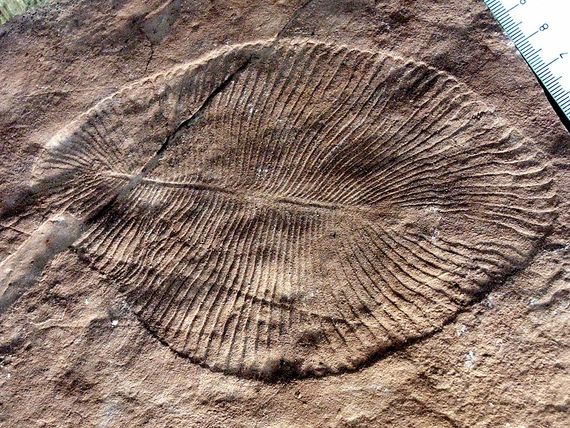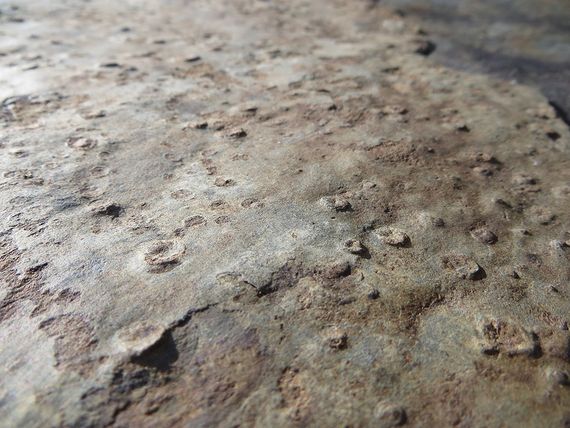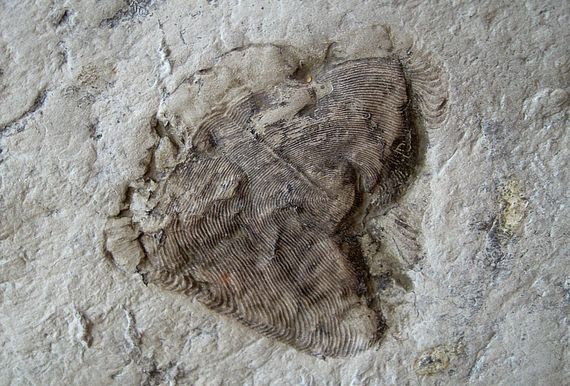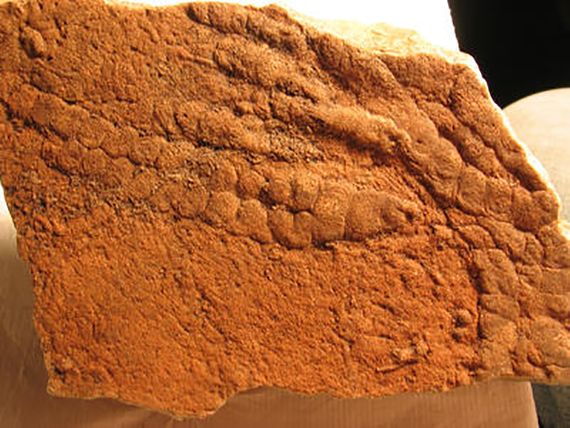Where Did The First Animals Evolve From
For some four billion years, no life existed on World more complex than a uncomplicated cell. Then, and for reasons still unknown, near 575 one thousand thousand years ago multicellular life forms suddenly began to multiply. That outcome, named the Avalon explosion, happened after the planet left behind the frigid phase of the Cryogenian Period to enter the Ediacaran, which lasted from 635 to 542 meg years ago.
Of the so-called Ediacaran or Precambrian biota, with more than than 140 confirmed genera, today information technology continues to be pretty much unknown. For case, scientists don't know with certainty if many of those creatures were animals, fungi, algae, lichens or simple protozoa, or if they left descendants in the following period (the Cambrian) or if they went extinct without a trace, like a failed life experiment. A recent written report has shown that at least one of those creatures was undoubtedly an animal, which brings u.s.a. a niggling closer to agreement the enigmatic history of the first complex organisms that inhabited our planet, of which nosotros select some representatives below.
Dickinsonia

For 70 years, scientists have debated whether Dickinsonia—a flat, oval and striated creature up to almost a metre and a one-half long—was an animal, a lichen or a giant protozoa, or if it belonged to another biologically-different category, perhaps extinct today. The start fossil was discovered in 1947 in Commonwealth of australia, condign ane of the most iconic and best-studied organisms of the Ediacaran biota, to the point that several unlike species accept been identified.
In September 2018, a study in the journal Science was able to characterise the fossil lipids nowadays in several specimens of Dickinsonia found in due north-western Russia, discovering that cholesterol, a typical animal fat, was arable. The results mean that this animate being that lived 558 million years agone is the oldest confirmed representative of terrestrial beast. The researchers further ended that: "the Ediacaran biota was indeed a prelude to the Cambrian explosion of animal life."
Aspidella

When in 1868 the Scottish geologist Alexander Murray discovered in Newfoundland, Canada some small disc-shaped markings in the rock, he could not imagine that he was opening an unknown cardinal chapter of the history of life on Earth. Withal, 4 years later, the palaeontologist Elkanah Billings proposed the thought that the foreign circles were actually fossils, a suggestion that was dismissed at the time since they had been found in Precambrian rocks. Instead, it was argued that they had been formed by chemical deposits or gas bubbles.
Almost a century would pass earlier in that location was a general recognition of the existence of macroscopic life prior to the Cambrian. Murray's discs, together with others in different places, were assigned to the species Aspidella terranovica, only this instance illustrates the current confusion about the reality of the Ediacaran biota: fossils initially identified as cnidarians (jellyfish) and classified as Aspidella and other genera, were probably not disc-shaped organisms, just rather the imprints of rhizoids—protuberances by which different creatures with the appearance of fronds are anchored to the substrate. On the other manus, fossil prints similar to those left past anemones have besides been institute with Aspidella, which would back up their classification as cnidarians. In short, uncertainty abounds.
Charnia

The Ediacaran seabed on which Dickinsonia crawled was populated by a variety of fern-like lifeforms anchored to the lesser. One of those organisms was Charnia, the showtime confirmed fossil that came from rocks prior to the Cambrian menstruum, and therefore the ane that formally inaugurated the written report of the Ediacaran biota.
Afterwards its discovery in England in 1958, its appearance of leaves with alternate branches, upward to two metres long, suggested that it was a type of algae. However, when it was learned that information technology lived in waters as well deep to deport out photosynthesis, it was reclassified as a pennatulacean, a grouping of modern animals related to corals. This hypothesis has also been refuted, and today Charnia is still a mystery. Its classification has been proposed in a tentative grouping called Vendobionta, a possible biological kingdom separate from the electric current ones that lived during the Ediacaran period and died with it.
Kimberella

Similar Dickinsonia, Kimberella was probably an creature that inhabited the terrestrial seas 555 million years ago. The bilateral symmetry of its body has led some scientists to propose that current species have inherited this basic plan of organization from our distant ancestors in the Ediacaran biota.
Originally described in 1966, Kimberella was at commencement identified as a jellyfish. Still, in 1997 more detailed studies of its structure and what looked similar marks of a radula (toothed tongue) suggests that information technology should be classified as an ancestor mollusc of modern marine slugs, which possibly fed by scraping off the microbes present on the surface over which it moved. The more than 1,000 fossils institute, up to 15 centimetres in length, accept allowed scientists to understand in great detail the anatomy of its body, possibly covered by a soft vanquish, and have even led to speculation well-nigh its ecology and habits.
Andiva

The rich sets of fossils found in at to the lowest degree 25 Ediacaran sites effectually the globe conjures up images of a panorama of bounding main bottoms where dissimilar flattened life forms crept or crawled in search of their sustenance. Forth with Dickinsonia, another of those prehistoric mat-like creatures was Andiva, an organism upwardly to 10 centimetres long whose trunk was probably covered past a thin soft shell. The same report that discovered the abundance of cholesterol in Dickinsonia did non reach such clear results when analysing Andiva fossils, only its anatomical characteristics advise that this gimmicky of Kimberella was probably also an brute.
Funisia

Within the multifariousness of life forms of the Ediacaran Period, Funisia represents the worms. The worm is not a biological taxonomy, but merely describes a heterogeneous group of animals that have in common a cylindrical shape and a soft body without limbs. Funisia may have been one of the inventors of this bodily organization. Offset described in 2008, information technology lived in colonies where it is suspected that it reproduced sexually, which would make it the oldest example yet found of this method of reproduction in an animal. Its classification has non yet been clearly determined, although it has been proposed that it could belong to the grouping of porifera (sponges) or cnidarians.
Javier Yanes
@yanes68
Source: https://www.bbvaopenmind.com/en/science/bioscience/what-were-the-first-animals-on-earth/
Posted by: royaltymornay.blogspot.com

0 Response to "Where Did The First Animals Evolve From"
Post a Comment